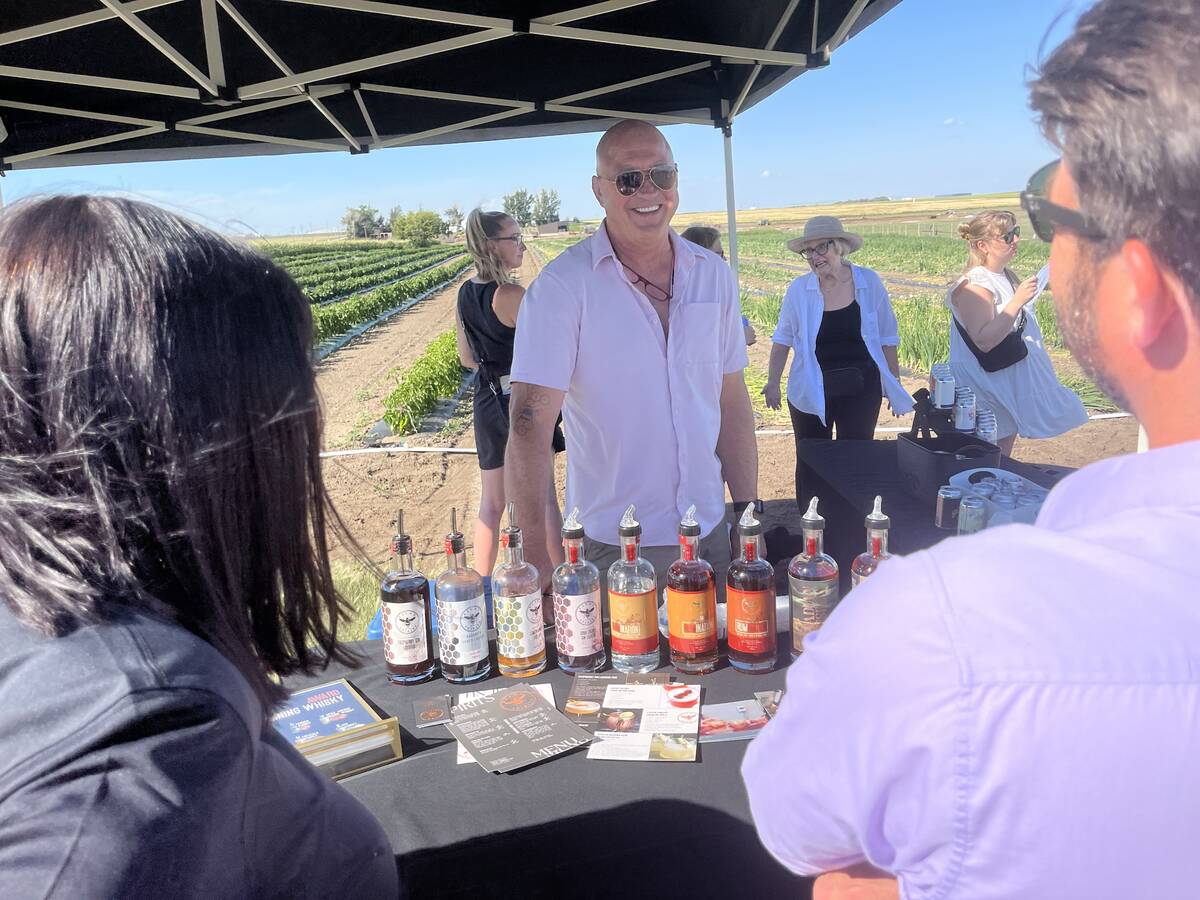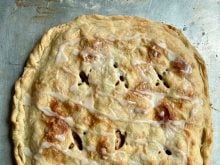RYLEY, Alta. – Leeanne and T.J. Wartena estimate they’ve calved about 5,000 head of cattle over the past 10 years, even though they only have a 25-head cow herd.
The former dairy farmers are so good at calving that other people hire them to custom handle their pregnant cows. This year they have an extra 300 cows from three herds to calve, down from last year’s 800.
“We’re good at calving,” said Leeanne.
They aren’t afraid to pull calves, tube calves, milk cranky cows, or take over a herd of cattle with a questionable calving history.
Read Also

From farmer to award-winning distiller
Pivot Spirits showcases transition from farmer to distiller with provincial award-winning results in Alberta for Lars Hirch
“The nice thing about a bunch of cows is that when you go out, there’s always something happening,” said T.J., who remembers one year when they had 25 calves born each day for a week.
“Calving could be a real headache if you don’t have the setup,” he said.
The central Alberta couple didn’t set out to custom calve as a way of supplementing their 40-head dairy farm income. The work slowly grew when they were asked to take on a herd.
Around the same time as the custom calving work grew, they had to make a choice to expand their dairy herd or get out. They were milking 40 head, but only had quota for 18 head and they were no longer being paid for the oversupply of milk.
“We had to expand or do something different,” said Leeanne, who began farming with nothing more than a young farmer’s loan 20 years ago.
Reluctantly, the couple quit the dairy and took on the custom calving business 10 years ago. The family joke is that when they retire, they’ll go back to a dairy.
Key to their success at calving is good corrals and facilities. When the cattle arrive, about a month before calving, they are kept in a pasture away from the corrals.
Once a week the cows that are getting close to calving are brought into the corrals where they’re watched closely.
“She has a keen eye for cows that are going to calve. I always pick the wrong ones,” said T.J. about his wife, an animal health technologist.
If the weather is fine, the cows calve in a shed. If the weather turns nasty, they bring the cattle and their newborns into an unheated shed with pens or to the heated former dairy barn. Once the calves are born, they’re moved out of the yard and back to the field again.
With any herd of cattle there are always going to be cows and calves that won’t mother up, or calves that are born backward and need help. Some of the herds have been more challenging than others.
One year a cattle buyer sent a herd of cull cows to be calved. The herd was a collection of mean animals, cows with bad bags, or those that wouldn’t milk.
“There was quite a few mean ones in there,” said T.J., who added they’re often making changes to their corrals so they always have an escape route.
One year a group of heifers was a nightmare. Almost every calf had to be pulled and 12 were born by caesarean section. They recommended the owner change bulls.
T.J. learned to pull calves while growing up on a dairy farm in Holland. Many of their smaller Friesen-type dairy cattle were bred to the larger Canadian Holsteins.
“We ended up pulling almost everything. We were good at pulling calves,” said T.J. Even the veterinarians don’t bother trying to pull the calves the Wartenas can’t budge.
“If we can’t get it out, there’s no way they can get it out. If it’s a c-section, it’s a c-section,” said T.J., who came to Canada in 1981 as an exchange student.
The cows arrive in the middle of December or mid-January and often stay until May or June when they can go straight back onto grass at the owner’s farm.
Some of the owners are older and aren’t able to do the physical work of calving cows, but still want the cattle on pasture during the rest of the year.
“The calving part for me is the highlight. If I had my choice I’d have the cows come for one month and have the cows go straight back,” said T.J.
Owners pay a set amount per head, per day, plus an additional amount for a live calf. The owners also pay any vet bills. Paying an additional amount for each live calf is a way each side knows they’re doing their best.
“It’s not always easy,” said T.J.
Because different herds mingle in the same area, a month before calving each cow is given a vaccination to prevent and reduce scours. The Wartenas are also quick to milk a cow or use milk replacer if they think a calf needs a boost.
Also at birth, male calves are castrated with a rubber ring and each calf is tagged if requested.
The Canadian Cattle Identification Agency ear tags are not put on until the animals leave the farm because the new radio frequency tags are too heavy for the small calves’ ears. Any medication is documented as well.
The couple also does some custom silage work in the summer. T.J. works year round for a neighbouring grain farmer and is able to take time off during the busy calving season.
Their own 25-head herd doesn’t calve until July to eliminate any perception of conflict.
This year they cut back from 800 cows to 300 cows and do more grain farming, but with low grain prices, calving cows doesn’t look so bad.
“We like working with cows, there’s no doubt about it,” said T.J.














